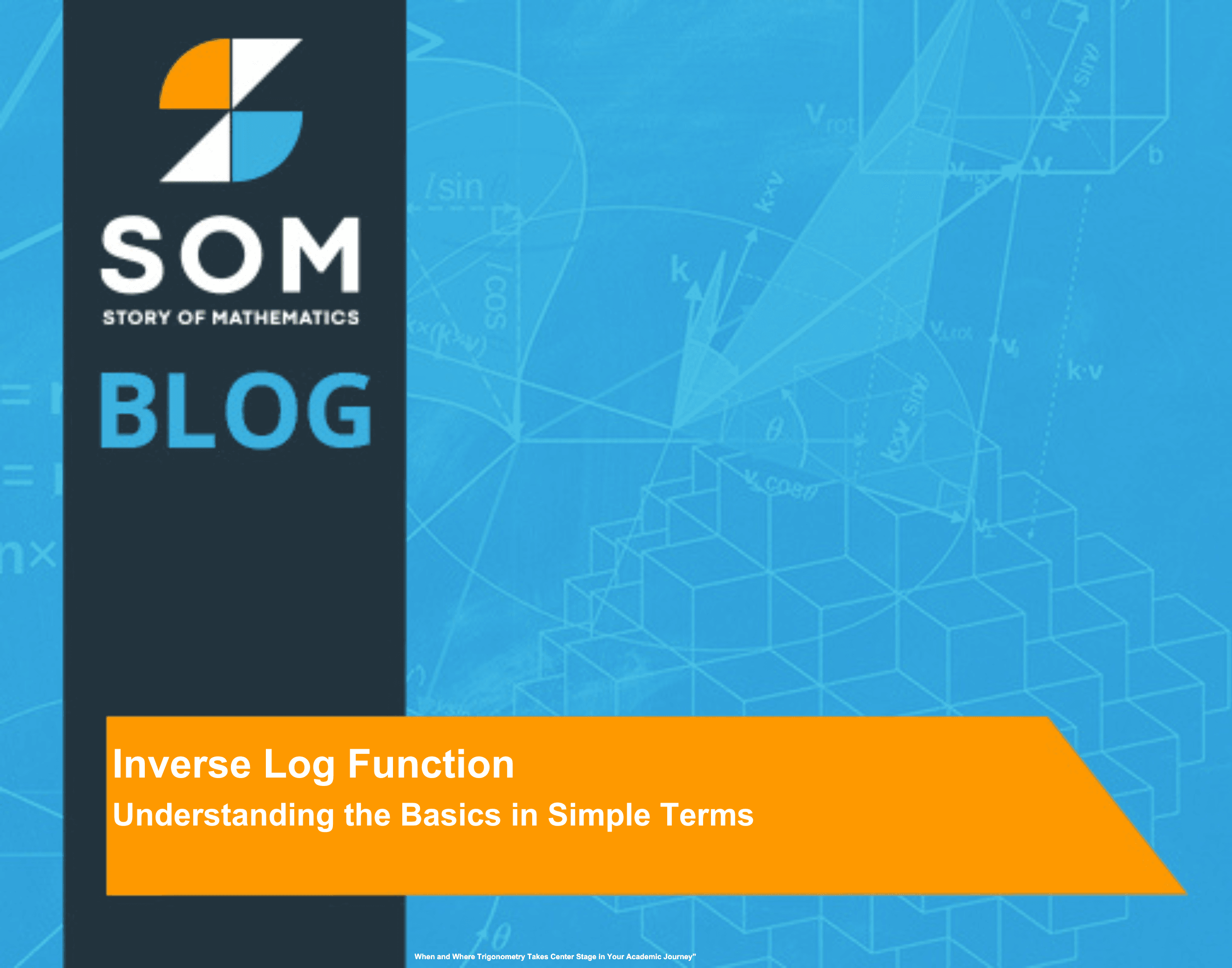To find the inverse of a function with a fraction, I start by remembering that the inverse function undoes the action of the original function. If my function is expressed as $y = frac{a}{b}x + c $, where ( a ), ( b ), and ( c ) are constants, my goal is to solve […]
Category Archives: Blog
To tell if a function has an inverse, you should first ensure that the function is one-to-one. This means that every output of the function corresponds to exactly one input. A practical way to determine this is through the horizontal line test: if any horizontal line intersects the graph of the function at most once, […]
The range of a square root function like $ f(x) = sqrt{x} $ plays a crucial role in understanding how this function behaves. For any given real number ( x ), the square root function returns a value that is the square root of ( x ). The domain of this function, which is the […]
To graph a piecewise function, I always start by understanding that it’s essentially a combination of different functions, each applying to specific intervals on the x-axis. A piecewise function can be written in the form $f(x) = begin{cases} f_1(x) & text{for } x text{ in domain } D_1, f_2(x) & text{for } x text{ in […]
The domain of the tangent function describes all the input values for which this trigonometric function is defined. Since the tangent function, $tan(x)$, is the ratio of the sine and cosine functions, $tan(x) = frac{sin(x)}{cos(x)} $, it is not defined wherever the cosine of an angle is zero. This happens at the odd multiples of […]
To solve a linear function, I always begin by identifying its standard form, which is typically expressed as $y = mx + b$. In this equation, (m) represents the slope of the line, and (b) denotes the y-intercept, where the line crosses the y-axis. By knowing these components, I can graph the function or work […]
To determine if a graph is a function, I first check whether every vertical line I can draw on the graph intersects it at no more than one point. This is known as the vertical line test. It’s a simple method that visually confirms whether a set of points on a graph represents a function, […]
To find the maximum and minimum of a function, you should first understand that these points, known as extrema, are where a function reaches its highest or lowest values. In the realm of calculus, I use various tools to determine these points, which are crucial in analyzing the behavior of functions. Whether it’s the roller […]
To find the slope of a function, I first determine whether the function is linear, which is recognizable by its standard form ( y = mx + b ) where ( m ) is the slope and ( b ) represents the y-intercept. The slope is a measure of how steep a line is, quantified […]
To sketch the graph of a function, I first consider the type of function and its features, such as intercepts, slopes, and asymptotes. Drawing the graph of a function is a practical way to visualize the behavior of mathematical expressions over a given domain. When I analyze the graph of a function, I look for […]
How to Find the Zeros of a Polynomial Function: A Step-by-Step Guide To find the zeros of a polynomial function, I would first understand what a zero of a polynomial means. In mathematics, a zero of a polynomial ( p(x) ) is a value ( x_i ) such that when substituted into the polynomial, the […]
To find a profit function, I first establish the revenue and cost functions of a business activity. Profit is the financial gain achieved when the revenue from business activities exceeds the expenses, costs, and taxes involved in sustaining those activities. In mathematical terms, the profit function, usually denoted as ( P(x) ), is derived by […]
To find the period of a trigonometric function, I always start by identifying the basic form of the function, whether it’s sine, cosine, or tangent. The period of these functions is the length of one complete cycle on the graph. For sine and cosine, the standard period is $2pi$ because they repeat every $2pi$ radians. […]
To calculate the rate of change of a function, I first identify two points on the graph or use the function’s equation to find two values. It’s important to understand that the rate of change represents how much the value of a given quantity, typically the y-value, changes as the x-value changes. For a linear […]
he domain of a function is the set of all possible input values it can accept, and for the square root function $f(x) = sqrt{x} $, this is all non-negative real numbers, represented as $[0, infty)$. This is because the square root of a negative number is not a real number, which is what the […]
The inverse log function is essentially the operation that reverses the effect of a logarithmic function. When I deal with mathematical functions, I often find the concept of inverses to be particularly fascinating because it allows me to unravel the effects of a function, bringing me back to the original value before the function was […]
To find an exponential function from a graph, I first identify the key components of the graph, like the horizontal asymptote, which can indicate the value of ( k ). This value helps discern the vertical shift from the graph’s simplest form. Understanding the graph of an exponential function is pivotal because it tells us […]
To find the derivative of an inverse function, I first ensure that the function in question is indeed invertible, meaning it’s both continuous and one-to-one on a given interval. Understanding the relationship between a function and its inverse is crucial, as it allows me to exploit the known derivatives of standard functions when working with […]
To find the domain of a quadratic function, I’ll remind myself that the domain refers to the set of all possible input values (usually x), for which the function is defined. Since a quadratic function can be written in the form $f(x) = ax^{2} + bx + c $, where ( a ), ( b […]
The steepest slope of a linear function represents the greatest rate of change on its graph. In mathematical terms, slope is the measure of steepness or the angle of incline and is usually denoted by the letter ‘m’. When evaluating the steepness of linear functions, I look at the magnitude of the slope—the larger the […]
To graph a function ( f(x) ), I always begin by determining its domain and range. The domain of a function represents all the possible input values ( x ) can take, while the range is the set of all possible output values ( f(x) ) can produce. Identifying these elements helps me understand the […]
A function is a fundamental concept in mathematics that I find crucial in the realm of algebra and beyond. It pertains to a specific type of relation that pairs each element in a set, known as the domain, with exactly one element in another set, known as the range. In more formal terms, for every […]
To find turning points of a function, you should first understand what a turning point is: it’s a point on the graph of a function where the direction of the curve changes. In mathematical terms, at a turning point, the derivative of the function will be zero. This is because the slope of the tangent […]
To find the concavity of a function, I always start by evaluating its second derivative. The concavity of a function gives us valuable information about how its graph bends or curves over an interval. If the second derivative—denoted as $f”(x)$—is positive over an interval, the function is concave up on that interval. This means the […]
To find the symmetry of a function, I first consider the visual patterns displayed when the function’s graph is plotted. Reflective symmetry in a graph occurs when two halves mirror each other across a line—either the y-axis for even functions or the origin for odd functions. Identifying symmetry can simplify the graphing process and deepen […]
To find the discontinuity of a function, I first examine points where the function is not defined, such as values that result in a division by zero. Understanding discontinuity is essential because it reveals where a function breaks, which is crucial for an accurate analysis of its behavior. For instance, with a rational function, like […]
To find the tangent line of a function, you should first understand the concept of a derivative. The derivative of a function at a certain point gives you the slope of the tangent line at that point. By finding this slope and using the coordinates of the given point, you can determine the equation of […]
No, a circle is not a function. A fundamental characteristic of a function in mathematics is that every input is associated with exactly one output. However, the equation of a circle—$x^2 + y^2 = r^2$ where (r) is the radius—does not satisfy this criterion. When we solve for (y), we obtain two values, $y = […]
To find the inverse function of a fraction, I must swap the roles of the independent variable (usually labeled as ( x )) and the dependent variable (usually labeled as ( y )) in the original function. For a function to have an inverse, it needs to be a one-to-one function, which means that for […]
To determine if a function is differentiable, I first verify its continuity across its entire domain. A function f(x) is considered differentiable at a point if it has a defined derivative at that point, meaning the slope of the tangent to the curve at that point exists. I check this by calculating the derivative f'(x), […]
To find the range of a quadratic function, I first determine the direction in which the parabola opens; this is guided by the coefficient of the $x^2$ term. If the coefficient is positive, the parabola opens upward, indicating that the range is either a value greater than or equal to the vertex’s y-coordinate. Conversely, if […]
A function is a specific type of rule in mathematics that establishes a relationship where each input is connected to exactly one output. In fields like science and engineering, understanding functions is vital because they model countless phenomena and problems. Think of a function as a machine: I put in a number, and the function […]
For a random variable $X$ that follows an exponential distribution with rate parameter $lambda > 0$, the MGF, $M_X(t)$, is defined only for $t < lambda$. The MGF for the specified domain of $t$, is calculated as: $$M_X(t) = frac{lambda}{lambda – t}$$ The moment generating function (MGF) of an exponential distribution is a powerful tool […]
To find inflection points of a function, you should first understand what an inflection point is. In calculus, an inflection point represents a location on the graph of a function where the concavity changes from upwards to downwards or vice versa. Essentially, it’s a point where the function’s curve changes direction, signaling a shift in […]
The moment generating function of a normal distribution with mean $mu$ and variance $sigma^2$, is $M_X(t) = e^{mu t + frac{1}{2}sigma^2t^2}$. The moment-generating function (MGF) is a powerful tool in the field of probability and statistics that characterizes the distribution of a random variable. In essence, the MGF of a random variable provides a bridge […]
The derivative of the sigmoid function is $ frac{d sigma(x)}{dx} = sigma(x) cdot (1 – sigma(x)) $. The derivative of the sigmoid function is a fundamental concept in machine learning and deep learning, particularly within the context of neural networks. As an activation function, the sigmoid function denoted as $sigma(x) = frac{1}{1+e^{-x}}$, introduces non-linearity into […]
To find the inverse of a log function, I always start by considering the original logarithmic function, which typically has the form $y = log_b(x)$, where $b$ is the base of the logarithm. The inverse function of a logarithmic function is exponential because these two types of functions are mathematically opposite operations. This means if […]
To find the real zeros of a function, I usually start by setting the function equal to zero and solving for the variable, typically x. The real zeros, also simply called the roots, are the x-values where the function’s graph intersects the x-axis. For a given function ( f(x) ), this translates to finding the […]
To find the x-intercept of a rational function, you should first set the output value to zero. In mathematical terms, the x-intercepts are the values of (x) for which the function evaluates to zero, or mathematically, (f(x) = 0). Since rational functions are expressed as the ratio of two polynomials, you’ll solve for (x) by […]
In a real-world context, functions describe how one quantity changes in response to another, offering a predictable connection between the two. For instance, in real-life situations, a taxi fare can be represented as a function of the distance traveled. This means that the cost (output) depends on the mileage (input) according to a specific rule […]
To find an exponential function from a table, I first observe the patterns in the values. An exponential function typically takes the form $f(x) = ab^x$, where ( a ) is the initial value and ( b ) is the base or the growth factor. When looking at a table, I search for a consistent […]
To graph a cosine function, I first set up a standard coordinate plane. On this plane, the horizontal axis (x-axis) represents the angle in radians, ranging from (0) to $2pi$, and the vertical axis (y-axis) corresponds to the value of the cosine function, which varies between (-1) and (1). Since the cosine function is periodic […]
An exponential function is a mathematical expression characterized by a constant base raised to a variable exponent, typically represented as $f(x) = b^x $, where ( b ) is a positive real number not equal to 1. The domain of an exponential function is all real numbers, as you can raise a positive base to […]
To graph a polynomial function, I always start by determining its degree, which tells me the maximum number of turns the graph can have. For example, a polynomial function of degree $n$ can have at most $n-1$ turning points. The graph of these functions is always continuous, which means it can be drawn without lifting […]
An exponential function is a type of function that involves an exponent which contains a variable. By its definition, an exponential function is mathematically expressed as $f(x) = ab^x $, where ( a ) is a nonzero constant, ( b ) is a positive real number different from 1, and x represents any real number. […]
To write a linear function, I typically start by determining the slope and the y-intercept. This form, known as slope-intercept form, is written as $y = mx + b$, where (m) represents the slope or the rate of change, and (b) signifies the y-intercept, the point where the function crosses the y-axis. Plotting a linear […]
To find the y-intercept of a quadratic function, I start by evaluating the function when the input, x, is zero. This is because the y-intercept is where the graph of the function crosses the y-axis, which happens at ( x=0 ). When working with a function in standard form, which is $f(x) = ax^2 + […]
To find the range of a quadratic function, you should first understand the basic form of a quadratic function, which is $y = ax^2 + bx + c$, where $a$, $b$, and $c$ are constants, and $a neq 0$. This equation represents a parabola when graphed on the coordinate plane, and its range is the […]
To find the amplitude of a function, I start by identifying its highest and lowest points on the graph. The amplitude is a measure of its vertical stretch, representing half the distance between the peak and trough of a function’s output. For periodic functions like sine and cosine, this is especially straightforward. I use the […]
To find the average rate of change of a function, you should first identify two distinct points on the function and note their coordinates. The average rate of change is essentially the slope of the secant line that intersects the graph of the function at these points. In calculus, this concept helps us understand how […]













































![Feature Image ]Exponential Function Table A Quick Guide to Understanding Values](https://www.storyofmathematics.com/wp-content/uploads/2024/01/Feature-Image-Exponential-Function-Table-A-Quick-Guide-to-Understanding-Values.png)




